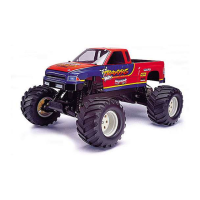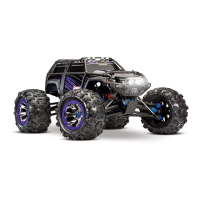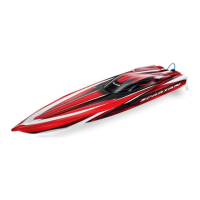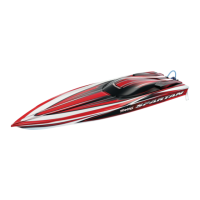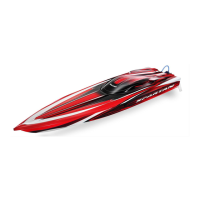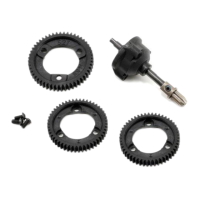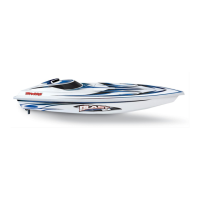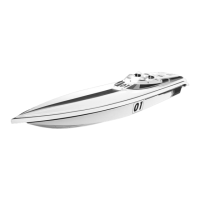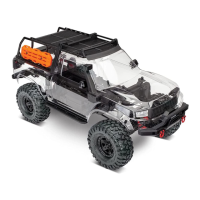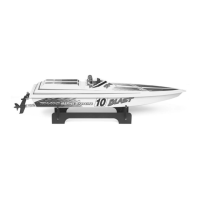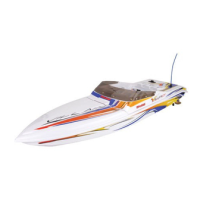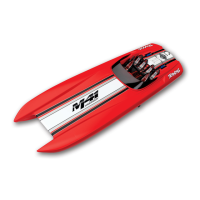Do you have a question about the Traxxas Stampede 4x4 and is the answer not in the manual?
Detailed warnings and precautions for using LiPo batteries, covering fire hazards and safe handling procedures.
Key reminders for safe operation, including avoiding public roads, crowds, and ensuring visibility.
Guidelines for safe operation of the electronic speed control (ESC), including battery disconnection and wire insulation.
Advice on preparing a workspace, organizing parts, and general tips for a smooth assembly process.
Guidance on choosing compatible batteries and chargers for optimal performance and safety.
Recommendations for selecting appropriate motors and electronic speed controls for the model.
Information on choosing Traxxas TQi radio systems and compatible servos for the model.
Visual guide to common screws, nuts, and bearings used in the assembly with their descriptions.
Explanation of icons used in the manual to convey specific assembly actions and meanings.
Step-by-step guide for assembling the differential carrier, gears, and bearings with oil.
Instructions for assembling front and rear shocks, including filling with silicone oil and bleeding air.
Steps to install the differential housing and pinion gear onto the front bulkhead assembly.
Attaching the front suspension arms, tie bar, and lower skidplate to the chassis.
Building the front wheel hubs, steering blocks, caster blocks, and installing driveshafts.
Connecting the front driveshaft/hub assemblies and installing the front camber links.
Attaching the front bumper and mounting the assembled front shock absorbers.
Assembling the bellcrank onto the chassis and installing the steering draglink and toe links.
Installing the differential into the rear housing and attaching the rear shock tower.
Mounting the rear suspension arms and assembling/installing the rear bumper assembly.
Building the rear stub axle carriers, driveshafts, and hub assemblies.
Attaching the rear camber links and mounting the assembled rear shock absorbers.
Mounting the motor mount and installing the steering servo onto the chassis.
Securing the battery hold down components and installing the electronic speed control (ESC).
Mounting the receiver box, installing the receiver, and routing wires.
Sliding the antenna tube into the chassis and waterproofing the receiver box.
Assembling the slipper clutch and centering the steering servo for proper operation.
Connecting the center driveshaft and securing the assembled front module to the chassis.
Mounting the rear module onto the chassis, ensuring proper alignment of driveshafts.
Mounting the motor, pinion gear, and installing the gear cover with correct gear mesh.
Mounting the body posts and gluing the tires onto the wheels.
Instructions on selecting paint, preparing the polycarbonate body, and spray painting techniques.
Guidance on applying decals for a clean finish, including positioning and bubble removal.
| Scale | 1:10 |
|---|---|
| Drive type | 4-wheel drive (4WD) |
| Engine type | Electric engine |
| Product type | Car |
| Housing color | Black, Red |
| Maximum speed | 50 km/h |
| Frequency band | 2.4 GHz |
| Chassis material | Nylon |
| Channels quantity | 2 channels |
| Construction type | Ready-to-Run (RTR) |
| Protection features | Water resistant |
| Electronic speed control (ESC) | Yes |
| Electronic speed control (ESC) type | Brushed |
| Compatible battery sizes | AA |
| Number of batteries (transmitter) | 4 |
| Width | 397 mm |
|---|---|
| Length | 227 mm |
| Weight | 2570 g |
| Wheelbase | 275 mm |
| Front wheels diameter | 72 mm |
